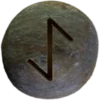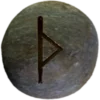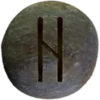Last Updated on December 11, 2024
Table of Contents


Fenrir (pronounced FEN-reer or FEN-rir), also known as Fenrisúlfr (FEN-ris-OOL-fr), is one of the most powerful and feared beings in existence. Born to Loki, the trickster god, and the giantess Angrboða, Fenrir has the might to bring destruction and chaos. His massive size and relentless strength make him a symbol of raw, untamed power. As the wolf destined to bring about the fall of the gods, Fenrir’s presence looms large in the hearts of many who know his story.
Fenrir’s appetite for destruction is unparalleled, but it isn’t his choice. The gods, seeing his immense potential for devastation, attempted to bind him early on. They feared his eventual role in Ragnarök—the final battle. Three times they tried to restrain him, but Fenrir’s strength easily shattered their first two chains. The third attempt, however, succeeded with a magical fetter called Gleipnir, crafted by the dwarves from impossible elements: the sound of a cat’s footfall, a woman’s beard, the roots of a mountain, and more. The gods tricked Fenrir into testing this seemingly harmless ribbon, promising to release him if he could not break free. Sensing their deception, Fenrir demanded one of the gods place a hand in his mouth as assurance. Týr, the god of war, bravely stepped forward. When Fenrir realized he had been betrayed, he bit off Týr’s hand. Bound by Gleipnir, Fenrir awaited his moment of revenge.
Fenrir’s Role in Ragnarök
At Ragnarök, Fenrir will break free of his bonds. His jaws will stretch wide, swallowing everything in his path. Prophecies foretell that he will kill Odin, Allfather and leader of the Æsir, during the battle. His immense power and wrath will bring chaos to the world as it crumbles. Fenrir’s existence represents an unstoppable force, fated to bring destruction but not out of malice—merely due to the inevitability of fate.
Fenrir’s children, Sköll and Hati, chase the sun and moon through the sky. At Ragnarök, they too will catch and devour their prey, plunging the world into darkness.
The Rune Associated with Fenrir
The Thurisaz Elder Futhark rune (ᚦ) represents chaos, destructive power, and primal force. It aligns with Fenrir’s uncontrollable nature, his strength, and his inevitable role in Ragnarök. The rune’s sharp, thorn-like design mirrors his ferocity and danger. ![]()
The Eihwaz rune (ᛇ) symbolizes endurance, death, and transformation. It reflects Fenrir’s unrelenting fate to bring about profound change during Ragnarök. His story aligns with Eihwaz through its themes of inevitable upheaval and renewal, teaching that destruction often precedes growth.
Fenrir in Asatru
In modern Asatru, Fenrir represents the raw forces of nature, primal power, and destruction. Many Asatruar recognize his role in maintaining cosmic balance, even though his actions seem catastrophic. Fenrir’s story offers lessons on fate, honor, and the cost of maintaining peace in a world teetering on the edge of chaos. His unstoppable nature reminds us of the fragility of order in a world filled with untamed forces.


